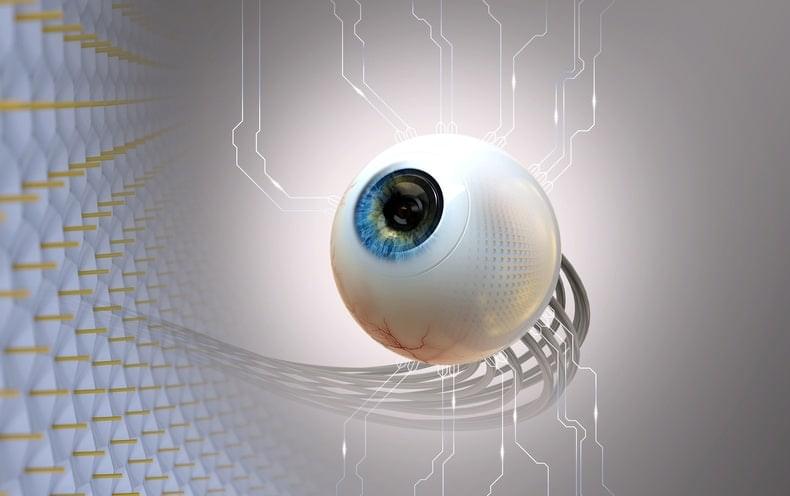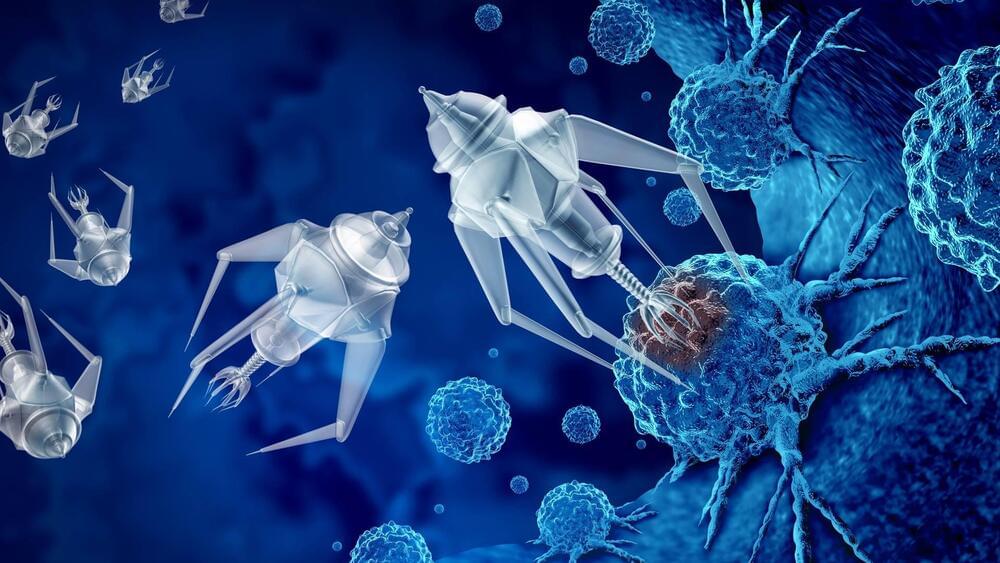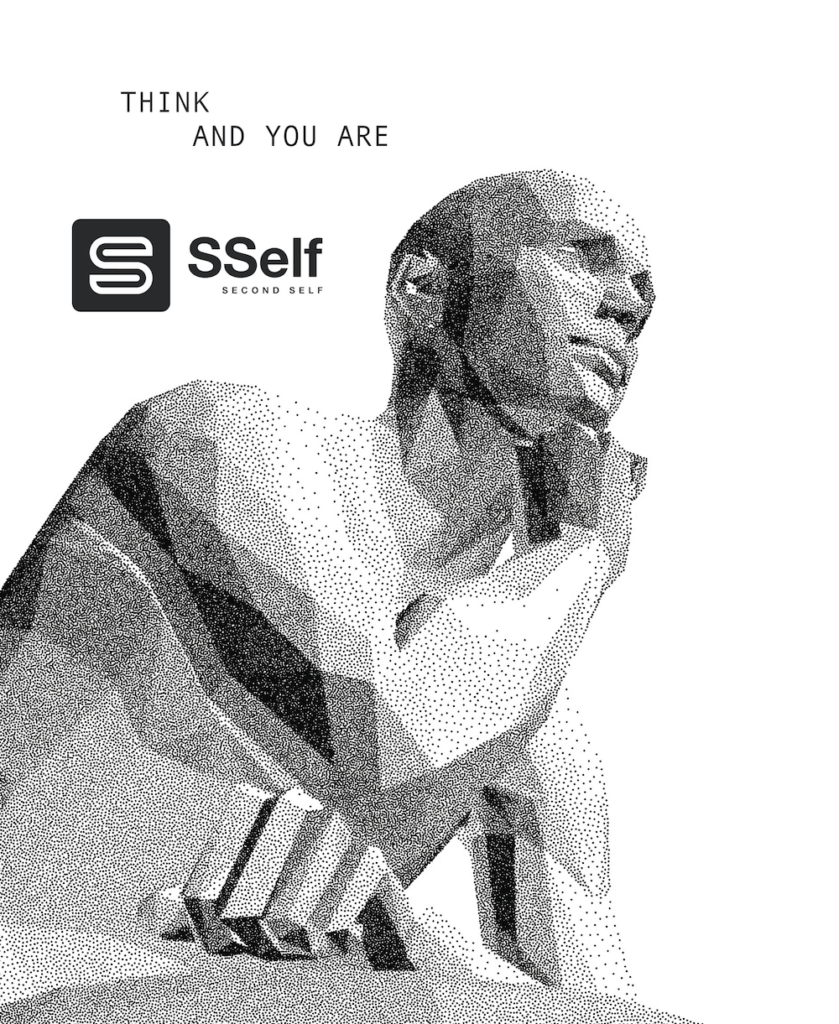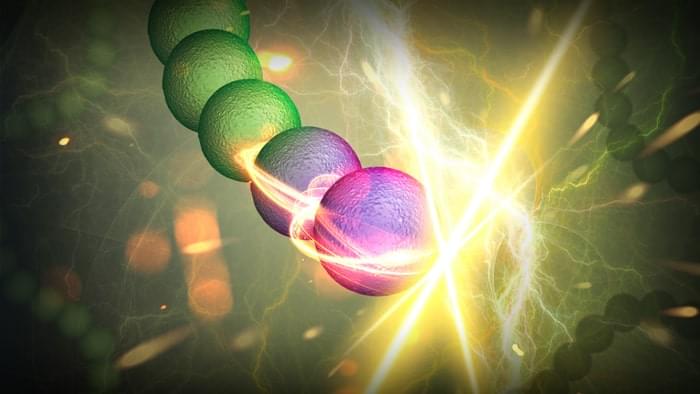Circa 2020 face_with_colon_three
Researchers have crafted a device that replicates the shape of the eye’s sensory membrane.

Video on prosthetic Esper hand.
New York-based engineering startup Esper Bionics has developed a flexible prosthetic mind-controlled hand that learns how to suggest the best grip faster than similar prosthetics.
Esper Bionics’ robotic arm is designed to be lighter and learn faster than many of the prosthetics currently available for amputees. The more the wearer uses the hand, the better and quicker it is to suggest the right grip.
Called Esper Hand, the arm uses an electromyography-based brain-computer interface (BCI) – a computer-based technology system that gathers brain signals and information from nerve stimulation of the muscle.
Over 30 sensors on the wearer’s forearm and shoulder skin pick up on this muscle activity or “electrical cues” and relay the information to trigger an action in the hand.
Read more on Dezeen: https://www.dezeen.com/?p=1768536

In a study recently published in Nature Materials, Prof. Wang Shutao from the Technical Institute of Physics and Chemistry (TICP) of the Chinese Academy of Sciences (CAS) and Prof. Liu Huan from Beihang University revealed the secret of ultra-slow motion of pine cones and developed mimicking actuators enabling unperceivable motion.
Responsive actuators have attracted extensive attention by virtue of their great potential applications in flexible robotics, sensors, energy conversion and other fields. Pine cones are a well-known bionic model for constructing artificial actuators.
However, little attention has been paid to the fact that the hygroscopic motion of pine cones is an ultra-slow process. Hygroscopic deformation has long been attributed to the uneven hygroscopic expansion of vascular bundles (VBs) and sclereids, controlled by their different microfibril orientations. The mechanism cannot explain the observation that VBs themselves are capable of reversible hygroscopic motion. Therefore, the mechanism of ultra-slow motion in pine cones has long been unclear.
Visit our sponsor, Brilliant: https://brilliant.org/IsaacArthur/
Every day brings us new technological advances, today we’ll explore many of those of such as robotics, automation, rapid delivery, education, medical science, nanotechnology, and more.
Episodes referenced in the Episode:
Power Satellites: https://www.youtube.com/watch?v=eBCbdThIJNE
Fusion Power: https://www.youtube.com/watch?v=ChTJHEdf6yM
Quiet Revolution: https://www.youtube.com/watch?v=jvH-7XX6pkk.
The Santa Claus Machine: https://www.youtube.com/watch?v=FmgYoryG_Ss.
Synthetic Meat: https://www.youtube.com/watch?v=_NULFAItoBs.
Cyborgs: https://www.youtube.com/watch?v=cGYKCTFIZLI
Mind Augmentation: https://www.youtube.com/watch?v=aQpYOVvU17Y
Mind-Machine Interfaces: https://www.youtube.com/watch?v=OCLLzI4R3bc.
Life Extension https://www.youtube.com/watch?v=kKmdc2AuXec.
The Science of Aging: https://www.youtube.com/watch?v=RDpjv2z3dyE
Happily Ever After: https://www.youtube.com/watch?v=0ypfzvQ-Q2w.
Attack of the Drones: https://www.youtube.com/watch?v=6oZCUtgnQkE
Advanced Metamaterials: https://www.youtube.com/watch?v=s0UZ6-oeiIE
Portable Power: https://www.youtube.com/watch?v=ffXqcf48D9Q
The Nuclear Option: https://www.youtube.com/watch?v=3aBOhC1c6m8
Moon: Industrial Complex: https://www.youtube.com/watch?v=y47MMNqKGxE
Machine Rebellion: https://www.youtube.com/watch?v=jHd22kMa0_w.
The Paperclip Maximizer: https://www.youtube.com/watch?v=3mk7NVFz_88
Technological Stagnation: Coming Soon.
Non-Carbon Based Life: Coming Soon.
Visit our Website: http://www.isaacarthur.net.
Support us on Patreon: https://www.patreon.com/IsaacArthur.
SFIA Merchandise available: https://www.signil.com/sfia/
Social Media:
Facebook Group: https://www.facebook.com/groups/1583992725237264/
Reddit: https://www.reddit.com/r/IsaacArthur/
Twitter: https://twitter.com/Isaac_A_Arthur on Twitter and RT our future content.
SFIA Discord Server: https://discord.gg/53GAShE
Listen or Download the audio of this episode from Soundcloud: Episode’s Audio-only version: https://soundcloud.com/isaac-arthur-148927746/new-technologi…-the-cards.
Episode’s Narration-only version: https://soundcloud.com/isaac-arthur-148927746/new-technologi…ation-only.
Credits:

The micro-robots consist of a special kind of bacteria.
Scientists have conceived of a new way to deliver cancer-killing compounds, called enterotoxins, to tumors using bionic bacteria that are steered by a magnetic field, according to a report by Inverse.
“Cancer is such a complex disease, it’s hard to combat it with one weapon,” said Simone Schürle-Finke, a micro-roboticist at the Swiss Federal Institute of Technology in Zürich, Switzerland, and one of the authors of the new study.
Wildpixel/iStock.
These bacteria function as “micro-robots” that can hunt down and rally around a specific tumor. They then release their own naturally produced anti-cancer chemicals and shrink the tumor.
A paralyzed man who cannot speak or type was able to spell out over 1,000 words using a neuroprosthetic device that translates his brain waves into full sentences, US researchers said Tuesday.
“Anything is possible,” was one of the man’s favorite phrases to spell out, said the first author of a new study on the research, Sean Metzger of the University of California San Francisco (UCSF).
Last year the team of UCSF researchers showed that a brain implant called a brain-computer interface could translate 50 very common words when the man attempted to say them in full.

This time I come to talk about a new concept in this Age of Artificial Intelligence and the already insipid world of Social Networks. Initially, quite a few years ago, I named it “Counterpart” (long before the TV series “Counterpart” and “Black Mirror”, or even the movie “Transcendence”).
It was the essence of the ETER9 Project that was taking shape in my head.
Over the years and also with the evolution of technologies — and of the human being himself —, the concept “Counterpart” has been getting better and, with each passing day, it makes more sense!
Imagine a purely digital receptacle with the basics inside, like that Intermediate Software (BIOS(1)) that computers have between the Hardware and the Operating System. That receptacle waits for you. One way or another, it waits patiently for you, as if waiting for a Soul to come alive in the ether of digital existence.
It gives new meaning to the phrase “speak your mind.
Do you remember how legendary cosmologist Stephen Hawking communicated using his special screen-equipped chair? Well, that was a brain-computer interface (BCI), a device that allows a person to communicate using their brain signals.
There are approximately 70 million people across the globe who suffer from speech-related disorders. What if there was a BCI for each one of these patients that could at least spell out words, if not speak for them? A team of researchers from the University of California, San Fransico (UCSF) works on one such groundbreaking device.
They have created a neuroprosthesis (a type of BCI device that re-establish lost functions of the nervous system) that analyzes the brain activity of a user with speech paralysis. The device then translates the brain signals into single letters and spells sentences on a screen. Reading the sentences lets anyone know what the user wants to say.


More affordable than the regular ones.
The Arm2u biomedical engineering team from the Barcelona School of Industrial Engineering (ETSEIB) of the Universitat Politècnica de Catalunya designed and constructed a configurable transradial prosthesis that responds to the user’s nerve impulses using 3D printing technology.
Arm2u is a prosthesis that can replace a missing arm below the elbow. It can be controlled with myoelectric control, which means that it is controlled by the natural electrical signals produced by muscle contraction.
UPC
As stated in the release, UPC bachelor’s and master’s degree students started off improving a prosthesis for people with disabilities using assistive technologies.